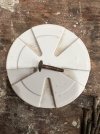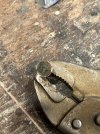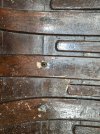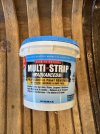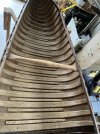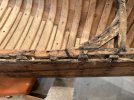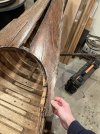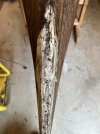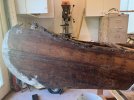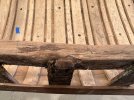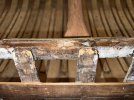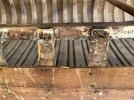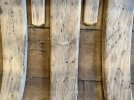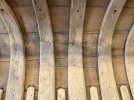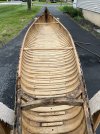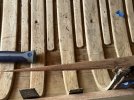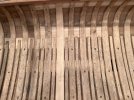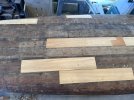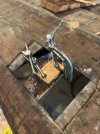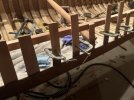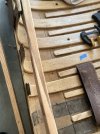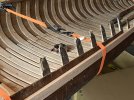Andrew
Curious about Wooden Canoes
With some of the warmer weather we've had lately, I've finally had a chance to get some work done on the Otca I picked up in January.
Taking off the brass capped keels and rub-rails (weight TBD) wasn't very difficult, besides the ends of the bilge keels which were riveted in. Those were quite a pain to remove, and I ended up chipping out part of the ribs. Oops. The canvas then came off without much effort.
As for stripping varnish... what a fun and pleasant experience this has been! I've seen a lot of different paint/varnish strippers mentioned, but I ended up using Multi-Strip Advanced from Back to Nature. I stumbled across it after seeing Jim Clearwater's Rushton video where he used Back to Nature's Ultra-strip, which wasn't available near me.
It took about 2 coats of the stripper to get the varnish completely off. I still have half of the canoe to do, and will need to touch up a few spots that I missed, including the seats and thwarts. I struggled getting in between the half ribs with the first coat, but I ended up buying a small brass bristle brush that worked like a charm! Other than that, I used a green scotch-brite pad which also worked pretty well. I'm happy with the results so far!
Andrew
Taking off the brass capped keels and rub-rails (weight TBD) wasn't very difficult, besides the ends of the bilge keels which were riveted in. Those were quite a pain to remove, and I ended up chipping out part of the ribs. Oops. The canvas then came off without much effort.
As for stripping varnish... what a fun and pleasant experience this has been! I've seen a lot of different paint/varnish strippers mentioned, but I ended up using Multi-Strip Advanced from Back to Nature. I stumbled across it after seeing Jim Clearwater's Rushton video where he used Back to Nature's Ultra-strip, which wasn't available near me.
It took about 2 coats of the stripper to get the varnish completely off. I still have half of the canoe to do, and will need to touch up a few spots that I missed, including the seats and thwarts. I struggled getting in between the half ribs with the first coat, but I ended up buying a small brass bristle brush that worked like a charm! Other than that, I used a green scotch-brite pad which also worked pretty well. I'm happy with the results so far!
Andrew


